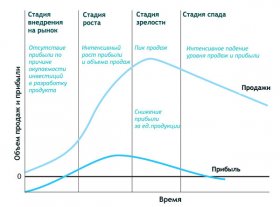New Stage In Promotion

By defining the stage at which the company ' s product is located, an effective strategy for its development can be developed, the priority goals and objectives of the product, price, advertising and marketing policy can be defined. In the article, we will detail every stage of the product ' s life cycle, describe each phase of product life cycle management, and make recommendations on company marketing strategy for each phase of the HTP curve.

The product life cycle has four main stages: market entry, growth, maturity and recession. Each phase of product development has its characteristics, requires detailed analysis and good governance. Before designing a marketing strategy for product development, define the life-cycle phase of the product. Incorrect choices of product management strategy may result in over-expenditure of the company or, on the contrary, a lack of investment in the product and a loss of market share. Consider every stage of the life cycle of the product in detail.
Market entry
The stage of market introduction is the first stage of product development. It may last for a long time, and may take place in a few months, depending on the company ' s efforts at this stage, as well as on the enterprise ' s investment capacity in product promotion. The key strategies of this phase are as follows.
Sales dynamics and profits
The stage of launching a new product into the market is characterized by a small volume of sales with a fairly moderate (low) growth rate. The new product or service is gradually being distributed through marketing channels, the target audience is not sufficiently aware of the existence of the product, and the product is not easily accessible. There is a gradual accumulation of knowledge about the product. Frequently, the phase of the launch may be lost due to the large initial cost of product development (reflection, special price and marketing, consumer lean, product refinishing, etc.).
Competition
The level of competition at the implementation stage is generally low, as the company is expected to produce a brand-new product with exclusive differentiational properties that are not yet competitive. It is unique that growth can be achieved.